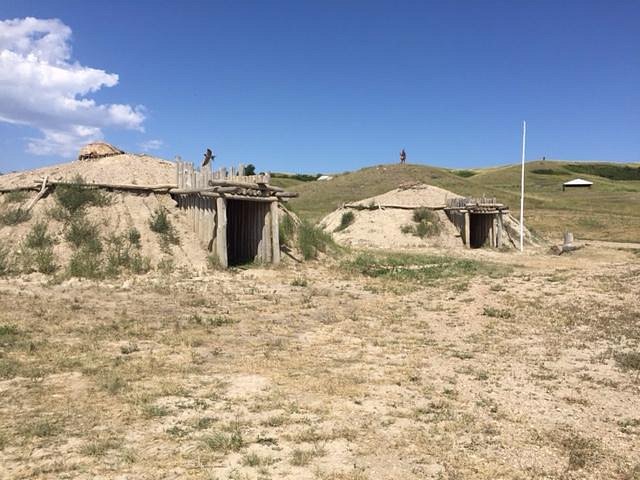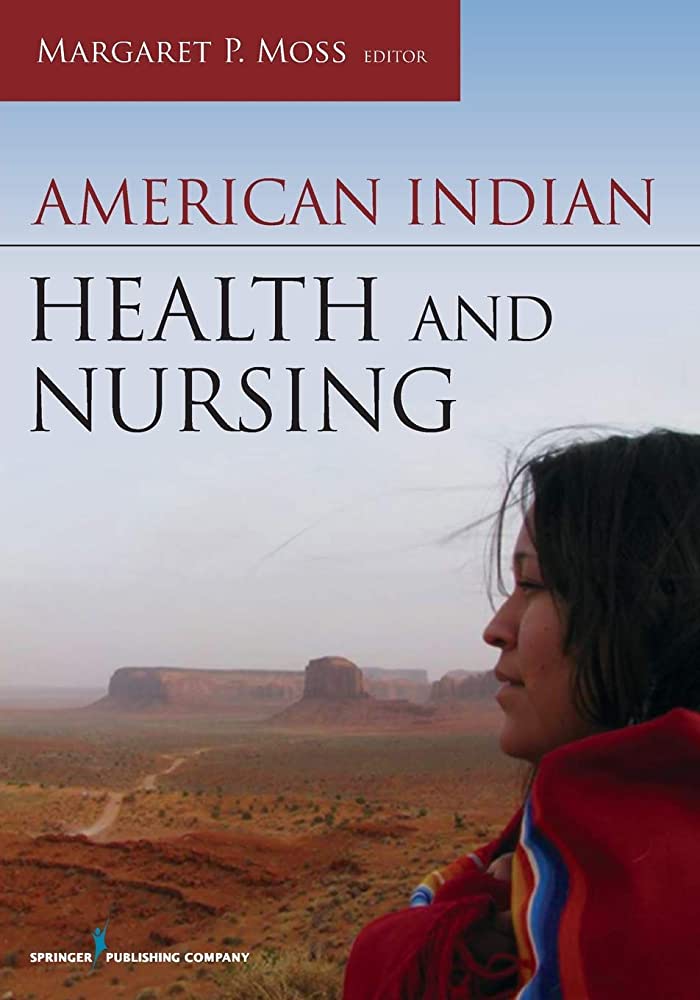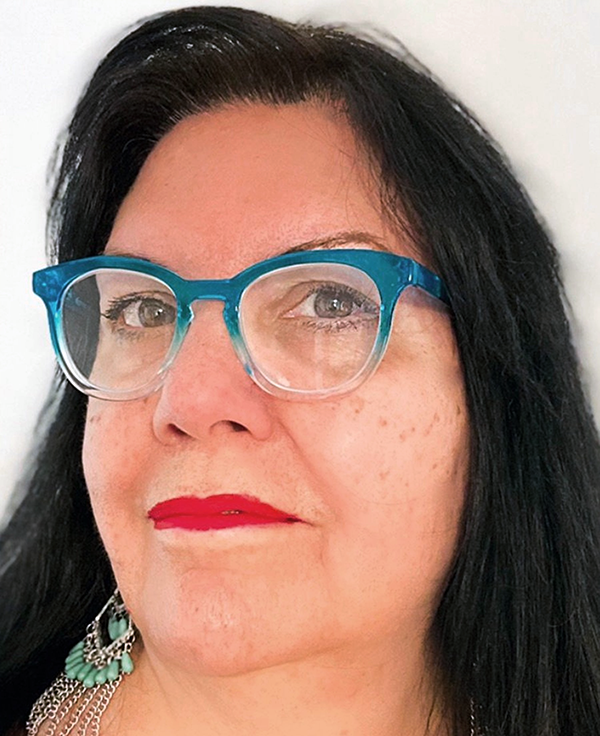Margaret P. Moss
PhD, JD, RN, FAAN The life expectancy of a male American Indian born in the Pine Ridge Reservation of South Dakota is mid-forties; of an American Indian woman in her early fifties. This short life span is the lowest life expectancy in the Western Hemisphere. The National Indian Council on Aging, Inc. reports in 2022 that – in contrast to other North American populations – the “American Indian and Alaska Native populations have higher death rates across age groups and the lowest average life expectancy.”
The life expectancy of a male American Indian born in the Pine Ridge Reservation of South Dakota is mid-forties; of an American Indian woman in her early fifties. This short life span is the lowest life expectancy in the Western Hemisphere. The National Indian Council on Aging, Inc. reports in 2022 that – in contrast to other North American populations – the “American Indian and Alaska Native populations have higher death rates across age groups and the lowest average life expectancy.”
 Our Honoree, Dr. Margaret P. Moss, is an American Indian Nurse who positioned herself and several of her American Indian Nurse colleagues to be instrumental in improving American Indian healthcare. Together they authored a nursing text, American Indian: Health and Nursing, addressing American Indian health, cultures, and issues that span the North American continent. This is the first nursing American Indian health text authored by American Indian Nurses; only one contributing co-author nurse is not recognized as an American Indian.
Our Honoree, Dr. Margaret P. Moss, is an American Indian Nurse who positioned herself and several of her American Indian Nurse colleagues to be instrumental in improving American Indian healthcare. Together they authored a nursing text, American Indian: Health and Nursing, addressing American Indian health, cultures, and issues that span the North American continent. This is the first nursing American Indian health text authored by American Indian Nurses; only one contributing co-author nurse is not recognized as an American Indian.
The nursing text describes the physical, mental, spiritual, and emotional domains of American Indian and other indigenous populations’ health in North America.
 This important work provides a knowledge base needed for contemporary nurses to personalize care and to be culturally competent when administering care to American Indian and other indigenous populations patients. “Indigenous knowledge” and “traditional approaches to health and healing” captured are valuable contributions to nursing literature.
This important work provides a knowledge base needed for contemporary nurses to personalize care and to be culturally competent when administering care to American Indian and other indigenous populations patients. “Indigenous knowledge” and “traditional approaches to health and healing” captured are valuable contributions to nursing literature.
Dr. Moss is currently Director of the First Nations House of Learning and an Associate Professor at the School of Nursing, University of British Columbia. We thank the school for their nomination of Dr. Moss.
– Deb
Margaret’s story:
As one of very few Native American nurses in the past 34 years, Dr. Margaret Moss has found that her unique perspective has proven invaluable throughout her career. At the Santa Fe Indian hospital early on, she was amazed at vast differences between Southwest Indigenous contexts and her urban and Plains Indian background.
These cultural experiences informed her first, award-winning textbook, American Indian Health and Nursing (2015). She was the 13th American Indian to earn a PhD in nursing, and the only one to also earn a law degree.
As an RWJF Health Policy Fellow, she contributed to seniors’ health policy at the US Senate; she held a Fulbright Research Chair at McGill University, lectured in Australia and New Zealand, and conducted investigations of anti-Indigenous racism in Canadian health care. Her expertise in global Indigenous health, especially influenced by colonialism, earned her membership on the inaugural Forbes 50 over 50 Women of Impact list.
 The life expectancy of a male American Indian born in the Pine Ridge Reservation of South Dakota is mid-forties; of an American Indian woman in her early fifties. This short life span is the lowest life expectancy in the Western Hemisphere. The National Indian Council on Aging, Inc. reports in 2022 that – in contrast to other North American populations – the “American Indian and Alaska Native populations have higher death rates across age groups and the lowest average life expectancy.”
The life expectancy of a male American Indian born in the Pine Ridge Reservation of South Dakota is mid-forties; of an American Indian woman in her early fifties. This short life span is the lowest life expectancy in the Western Hemisphere. The National Indian Council on Aging, Inc. reports in 2022 that – in contrast to other North American populations – the “American Indian and Alaska Native populations have higher death rates across age groups and the lowest average life expectancy.”
 Our Honoree, Dr. Margaret P. Moss, is an American Indian Nurse who positioned herself and several of her American Indian Nurse colleagues to be instrumental in improving American Indian healthcare. Together they authored a nursing text, American Indian: Health and Nursing, addressing American Indian health, cultures, and issues that span the North American continent. This is the first nursing American Indian health text authored by American Indian Nurses; only one contributing co-author nurse is not recognized as an American Indian.
Our Honoree, Dr. Margaret P. Moss, is an American Indian Nurse who positioned herself and several of her American Indian Nurse colleagues to be instrumental in improving American Indian healthcare. Together they authored a nursing text, American Indian: Health and Nursing, addressing American Indian health, cultures, and issues that span the North American continent. This is the first nursing American Indian health text authored by American Indian Nurses; only one contributing co-author nurse is not recognized as an American Indian.
The nursing text describes the physical, mental, spiritual, and emotional domains of American Indian and other indigenous populations’ health in North America.
 This important work provides a knowledge base needed for contemporary nurses to personalize care and to be culturally competent when administering care to American Indian and other indigenous populations patients. “Indigenous knowledge” and “traditional approaches to health and healing” captured are valuable contributions to nursing literature.
This important work provides a knowledge base needed for contemporary nurses to personalize care and to be culturally competent when administering care to American Indian and other indigenous populations patients. “Indigenous knowledge” and “traditional approaches to health and healing” captured are valuable contributions to nursing literature.
Dr. Moss is currently Director of the First Nations House of Learning and an Associate Professor at the School of Nursing, University of British Columbia. We thank the school for their nomination of Dr. Moss.
– Deb
Margaret’s story:
As one of very few Native American nurses in the past 34 years, Dr. Margaret Moss has found that her unique perspective has proven invaluable throughout her career. At the Santa Fe Indian hospital early on, she was amazed at vast differences between Southwest Indigenous contexts and her urban and Plains Indian background.
These cultural experiences informed her first, award-winning textbook, American Indian Health and Nursing (2015). She was the 13th American Indian to earn a PhD in nursing, and the only one to also earn a law degree.
As an RWJF Health Policy Fellow, she contributed to seniors’ health policy at the US Senate; she held a Fulbright Research Chair at McGill University, lectured in Australia and New Zealand, and conducted investigations of anti-Indigenous racism in Canadian health care. Her expertise in global Indigenous health, especially influenced by colonialism, earned her membership on the inaugural Forbes 50 over 50 Women of Impact list.
